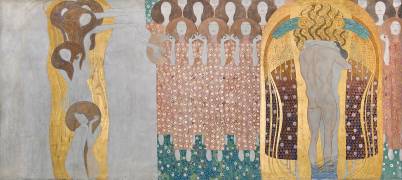Shop art print and framed art Dream Caused by the Flight of a Bee Around a Pomegranate a Second Before Awakening by Salvador Dali
Customise
Your art print
Dream Caused by the Flight of a Bee Aro... OF Salvador Dali
Dream Caused by the Flight of a Bee Around a Pomegranate a Second Before Awakening
Dream Caused by the Flight of a Bee Around a Pomegranate, One Second Before Awakening: Genesis of a Pictorial Dream
The painting was painted during Salvador Dalí's exile in the United States, a period marked by the Second World War and estrangement from his native Spain. Deeply influenced by the psychoanalytical theories of Sigmund Freud, Dalí was interested in the representation of dreams and the exploration of the unconscious. Dream caused by the flight of a bee... is part of this approach, illustrating the idea that external stimuli, however minute, can influence the content of our dreams. This surrealist work offers a fascinating plunge into the artist's dream world, exploring the intricacies of the subconscious and the fragile boundary between dream and reality.
The long, descriptive title, typical of Dalí, immediately announces the complexity of the work and its anchorage in the human psyche. This oil on wood painted in 1944 is also marked by the omnipresence of Gala, Dalí's muse and wife, who is often portrayed in his works as an idealized, enigmatic female figure.
It's a work that's a little different from the others.
Dream caused by the flight of a bee around a pomegranate, one second before awakening: a dreamlike, disordered landscape
The work, measuring 51 cm by 41 cm, presents a surreal composition where disparate elements float in an indefinite space. In the foreground, Gala's naked body seems to levitate above a rock, in a peaceful slumber that contrasts with the surrounding chaos. Behind her, a seascape stretches to infinity, evoking the bay of Cadaqués, a place dear to Dalí. Two pomegranates, symbols of fertility and resurrection, hang in the air, while a giant scorpion fish seems to rise from the waves. A leaping tiger and an elephant with long insect-like legs complete this strange, disquieting tableau. The whole creates an unreal, dreamlike atmosphere, where the laws of physics and logic are abolished.
Dream caused by the flight of a bee around a pomegranate, one second before awakening: Analysis of Dalí's masterpiece
Gala is the focal point of the painting. Her naked, voluptuous body, depicted with almost photographic realism, contrasts with the fantastical elements surrounding her. She seems to float in a state of suspension between sleep and wakefulness, embodying the fragility of dreams in the face of the irruption of reality. The bayoneted rifle threatening to pierce her may symbolize the violence of the outside world about to shatter the serenity of her sleep. The bee flying around the pomegranate in the foreground, the dream's trigger, evokes the fragility and impermanence of this altered state of consciousness.
As for the other elements completing this dream, the long-legged elephant, inspired by a sculpture by Bernini found in Rome's Piazza della Minerva, represents the fragility of reality and the power of the unconscious, while the tiger, a symbol of violence and passion, evokes primitive impulses and the scorpion fish, a venomous fish, symbolizes danger and anguish. Together, these elements create a network of complex, intertwined meanings, inviting the viewer to a personal interpretation of the work.
The impact of the Dream caused by the flight of a bee around a grenade, one second before awakening on surrealist art
Dream Caused by the Flight of a Bee... is considered one of the major works from Dalí's Surrealist period. It testifies to his technical mastery, boundless imagination and ability to translate psychoanalytic concepts visually.
The painting, now housed at the Museo Nacional Thyssen-Bornemisza in Madrid, helped consolidate Dalí's international renown and establish his place among the most important artists of the 20th century. He also influenced many Surrealist artists, and continues to fascinate with his rich symbolism and unique aesthetic. The work questions the nature of dreams, the boundary between the real and the imaginary, and the power of the unconscious, universal themes that continue to resonate today.
This artwork is a painting from the modern period. It belongs to the surrealism style.



































